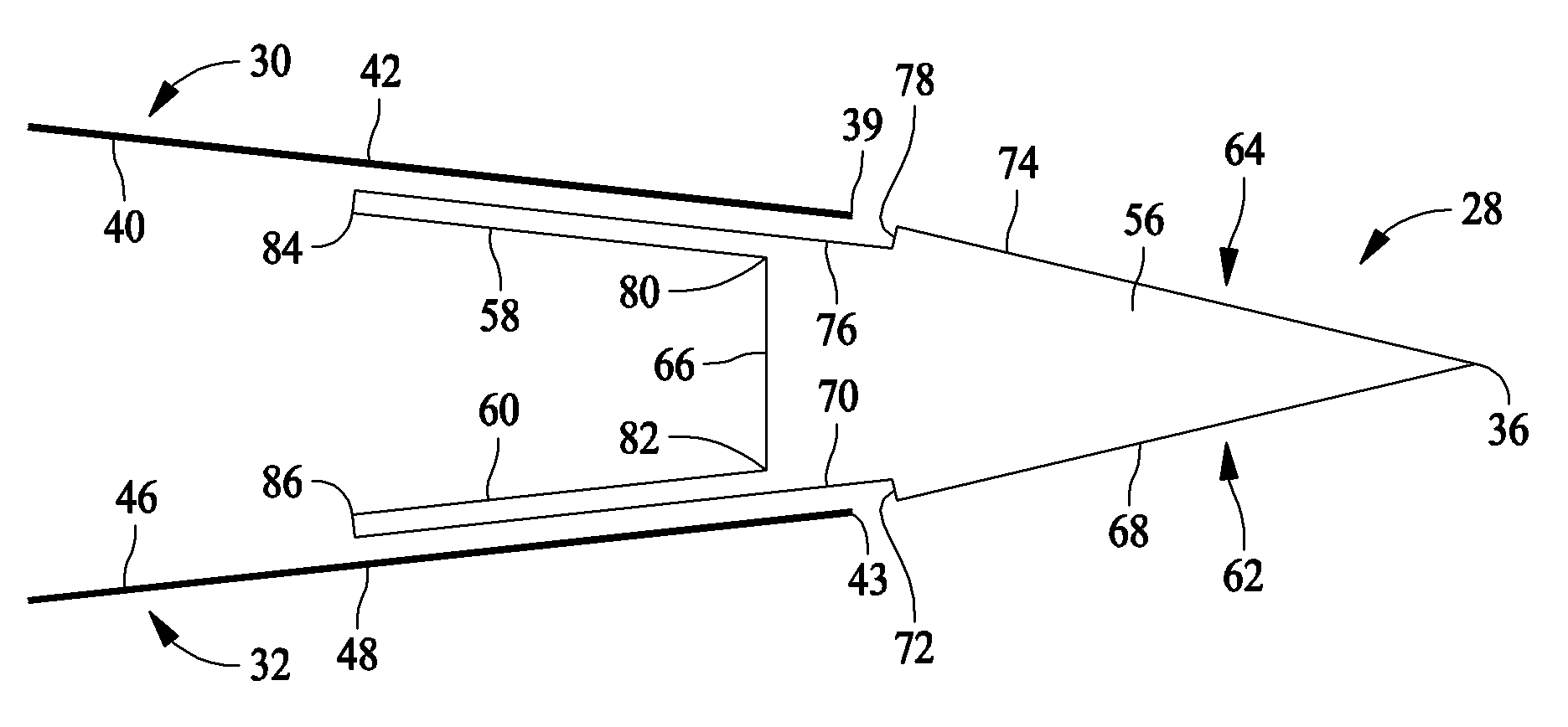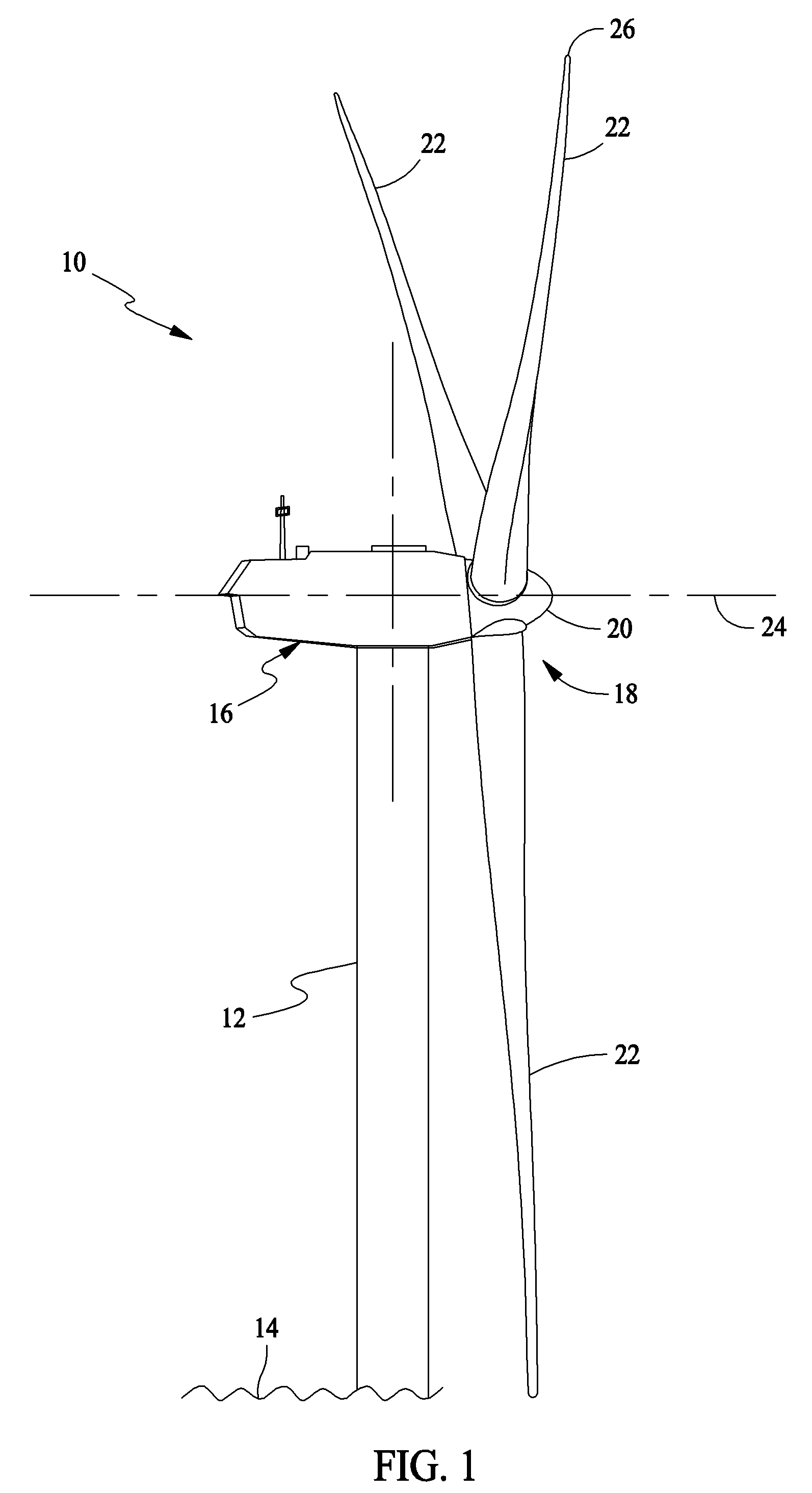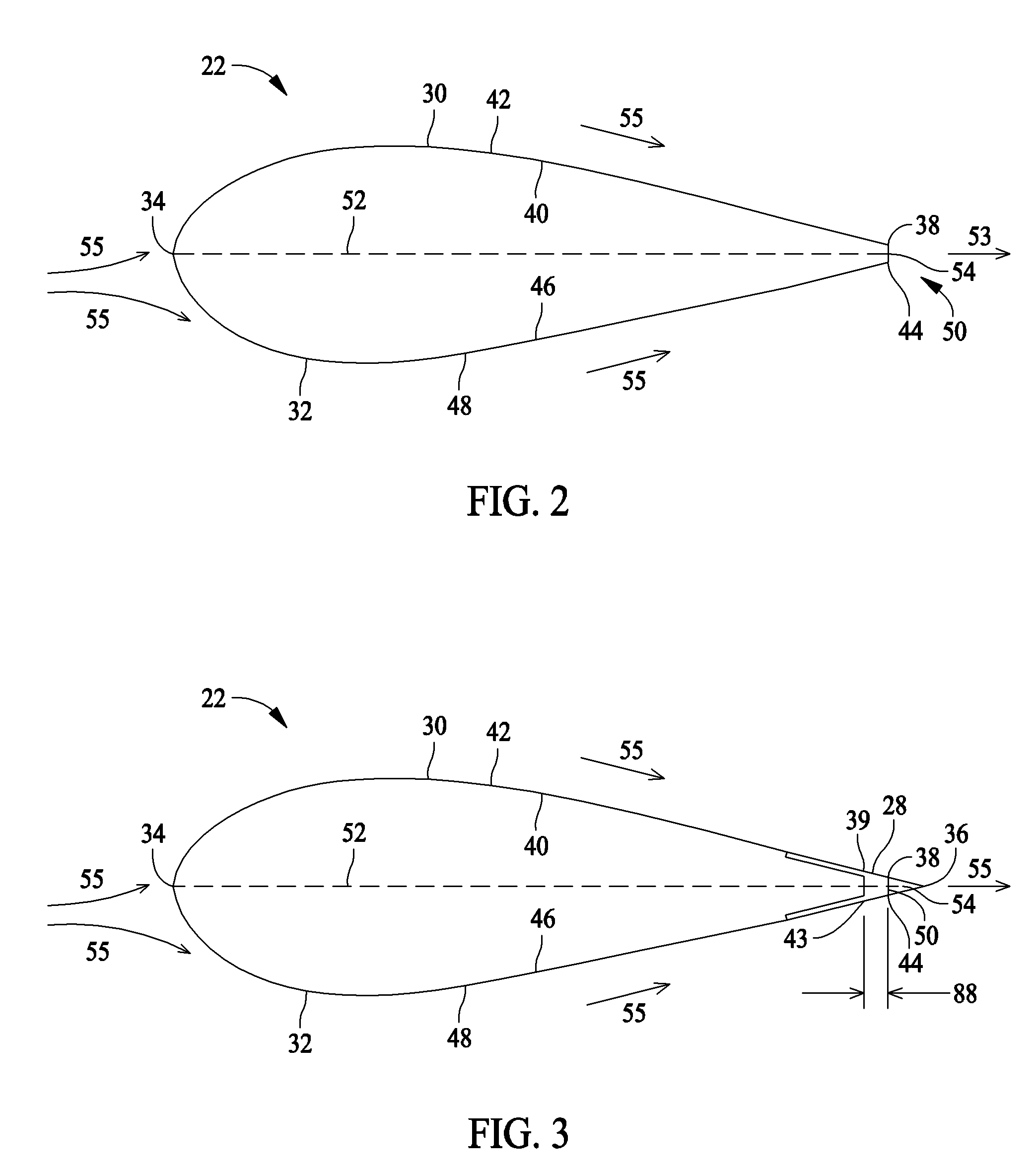Rotor blade trailing edge assembly and method of use
a technology of rotor blades and trailing edges, which is applied in the field of rotary blades, can solve the problems of difficult and time-consuming manufacture of known rotor blades, the damage of known large rotor blades, and the inability to finish fiberglass trailing edges to less than two-and-a-half millimeters
- Summary
- Abstract
- Description
- Claims
- Application Information
AI Technical Summary
Benefits of technology
Problems solved by technology
Method used
Image
Examples
Embodiment Construction
[0021]FIG. 1 is a schematic illustration of an exemplary wind turbine generator 10. In the exemplary embodiment, wind turbine generator 10 is a horizontal axis wind turbine. Alternatively, wind turbine 10 may be a vertical axis wind turbine. Wind turbine 10 has a tower 12 extending from a supporting surface 14, a nacelle 16 mounted on tower 12, and a rotor 18 coupled to nacelle 16. Rotor 18 has a rotatable hub 20 and a plurality of rotor blades 22 coupled to hub 20. In the exemplary embodiment, rotor 18 has three rotor blades 22. In an alternative embodiment, rotor 18 may have more or less than three rotor blades 22. A center line 24 extends through nacelle 16 and hub 20. Each rotor blade 22 includes a tip 26. In the exemplary embodiment, tower 12 is fabricated from tubular steel and has a cavity (not shown in FIG. 1) extending between supporting surface 14 and nacelle 16. In an alternate embodiment, tower 12 is a lattice tower. The height of tower 12 is selected based upon factors ...
PUM
| Property | Measurement | Unit |
|---|---|---|
| length | aaaaa | aaaaa |
| length | aaaaa | aaaaa |
| pressure | aaaaa | aaaaa |
Abstract
Description
Claims
Application Information
 Login to View More
Login to View More - R&D
- Intellectual Property
- Life Sciences
- Materials
- Tech Scout
- Unparalleled Data Quality
- Higher Quality Content
- 60% Fewer Hallucinations
Browse by: Latest US Patents, China's latest patents, Technical Efficacy Thesaurus, Application Domain, Technology Topic, Popular Technical Reports.
© 2025 PatSnap. All rights reserved.Legal|Privacy policy|Modern Slavery Act Transparency Statement|Sitemap|About US| Contact US: help@patsnap.com



